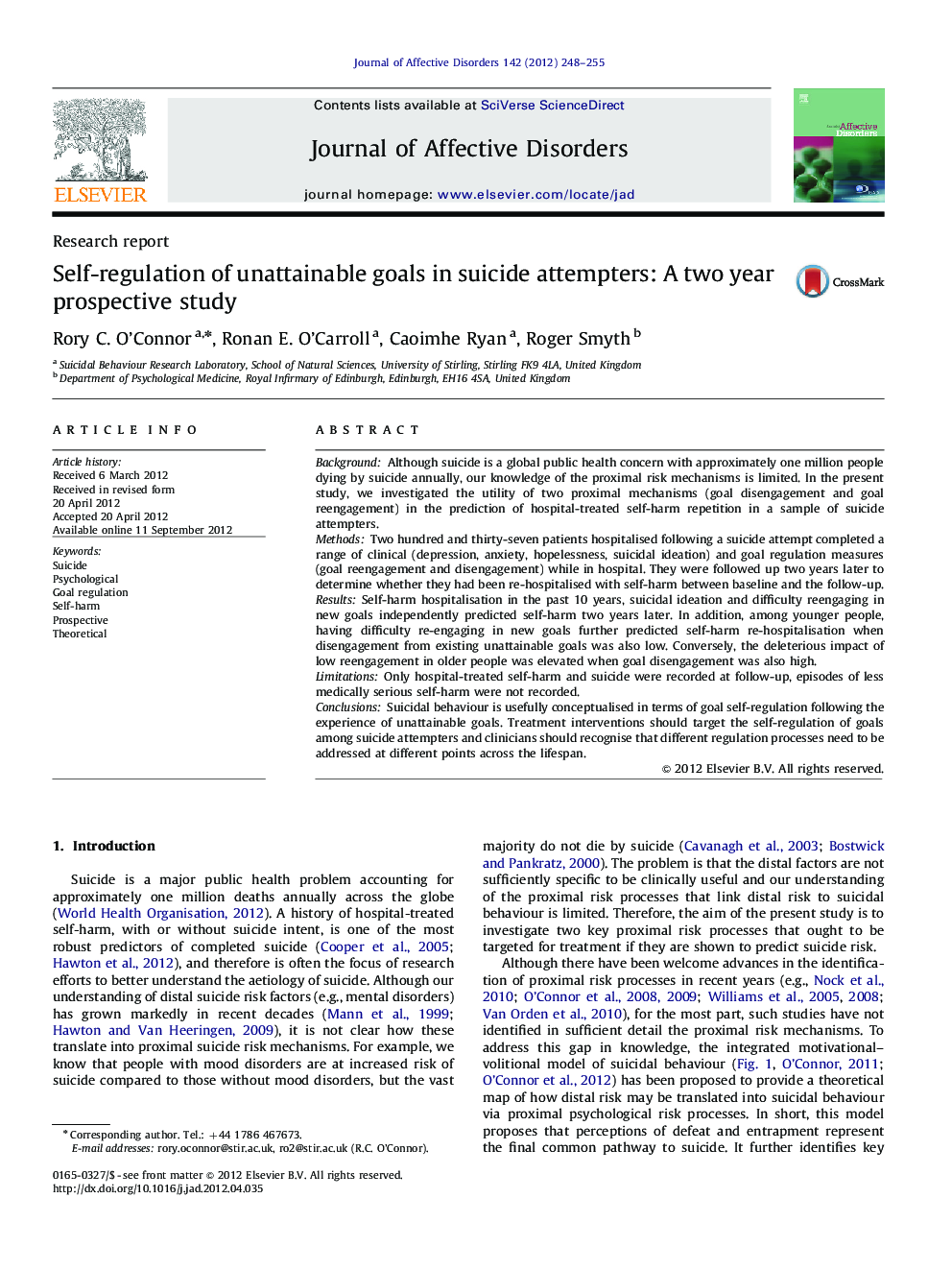| Article ID | Journal | Published Year | Pages | File Type |
|---|---|---|---|---|
| 4186332 | Journal of Affective Disorders | 2012 | 8 Pages |
BackgroundAlthough suicide is a global public health concern with approximately one million people dying by suicide annually, our knowledge of the proximal risk mechanisms is limited. In the present study, we investigated the utility of two proximal mechanisms (goal disengagement and goal reengagement) in the prediction of hospital-treated self-harm repetition in a sample of suicide attempters.MethodsTwo hundred and thirty-seven patients hospitalised following a suicide attempt completed a range of clinical (depression, anxiety, hopelessness, suicidal ideation) and goal regulation measures (goal reengagement and disengagement) while in hospital. They were followed up two years later to determine whether they had been re-hospitalised with self-harm between baseline and the follow-up.ResultsSelf-harm hospitalisation in the past 10 years, suicidal ideation and difficulty reengaging in new goals independently predicted self-harm two years later. In addition, among younger people, having difficulty re-engaging in new goals further predicted self-harm re-hospitalisation when disengagement from existing unattainable goals was also low. Conversely, the deleterious impact of low reengagement in older people was elevated when goal disengagement was also high.LimitationsOnly hospital-treated self-harm and suicide were recorded at follow-up, episodes of less medically serious self-harm were not recorded.ConclusionsSuicidal behaviour is usefully conceptualised in terms of goal self-regulation following the experience of unattainable goals. Treatment interventions should target the self-regulation of goals among suicide attempters and clinicians should recognise that different regulation processes need to be addressed at different points across the lifespan.
